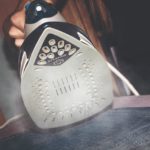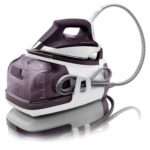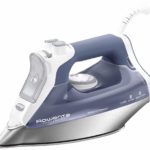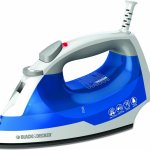This post contains affiliate links which will enable us to earn some commission if you click and buy.
One of the common complaints of clothes irons nowadays is that they are not durable. They leak water, becomes sticky or spit out dirt particles. Some do not even last beyond a few months of use. While there will always be duds when we buy electronic appliances, we also have to admit that the complaints or short lifespan might be due to user error or poor maintenance on our part at times. If we do not know how to take care of a steam iron properly, it can cause it to malfunction rather quickly.
Furthermore, an iron seems to be the same from one model to the next that we may not be aware of the subtle differences unless we care to read the instruction manual that comes with the purchase. As they say, the devil is in the details. This is where there may be slight differences in terms of care and maintenance for different iron models. Below are a few practical tips on how to take care of a steam iron to try to lengthen its lifespan and keep it in good working condition.
Tips On How To Take Care Of A Steam Iron
Avoid Rough Surfaces
You need to avoid damaging your iron soleplate. To keep it smooth without scratches, do not iron over hard surfaces like zippers, buttons and metal rivets. Neither should you lay down your iron horizontally over rough surfaces. Remember, once the soleplate is scratched and damaged, you can’t restore it to its original condition.
Use The Correct Water Type
You have to read the instructions to find out what type of water to use with your iron. The best Rowenta irons like the Rowenta Steam Force are designed to use with tap water unless you have extremely hard water in your area. Then the advice is to mix 50% of tap water with 50% of distilled water. On the other hand, some irons like the Reliable Velocity 200IR would recommend you to use distilled water to be on the safe side. High minerals content in the water would damage the internal parts of the iron and shorten its lifespan.
So, different manufacturers and different iron models may require different types of water to be used. Fill it with the wrong type of water and you might end up with leaks, stains, and a short lifespan.
Empty The Tank
Try not to leave water in the tank after you are done with your ironing. Empty it and turn off the steam control. Place the iron upright rather than horizontally for storage. If you don’t empty the tank and turn off the steam control, water will have the tendency to leak out because the vents are open.
Clean The Soleplate Regularly
Residues can build up on the soleplate over time. This can reduce the smoothness and even cause your iron to become sticky. So, clean it using a damp cloth. Read the instructions on how to care for the soleplate before you use cleaning agents or solvents to wipe it down. You have to make sure you won’t damage any coating that may be on the soleplate.
Use The Anti-Calcium and Self-Cleaning Function
You will also need to descale and clean the iron regularly to maintain tiptop performance. Most irons now have an anti-calcium and a self-cleaning feature. Read the instructions on how to use them to clean your iron. Generally, you will just need to heat up the iron, unplug it, remove the anti-calc valve and blast the iron to clear out all the impurities and unclog the steam vents. Preferably, do it over the sink to save yourself the clean-up afterward. You should also clean the anti-calc valve by using some lemon juice or vinegar.
Do not simply pour vinegar or cleaning agents into your iron for cleaning purposes to prevent damage. Although there are many suggestions online of using vinegar to clean an iron by pouring it into the tank, it is not the way to do it if it is not written in the instruction manual. In fact, the FAQs section on the official websites of some iron companies will specifically warn you against pouring vinegar into the water reservoir.
Don’t Tangle Up The Cord
When you store your steam iron, you can wrap the cord gently around the back of the iron or coil it and tie it up. This is to ensure it won’t get constantly tangled and cause the cord to fray over time. Once the cord is damaged, it will be dangerous to continue using the iron.
Invest In A Good Ironing Board
You don’t necessarily need the best ironing board but do try to get a stable and solid one that doesn’t collapse or tip over easily. If your iron is sitting on the ironing board and it collapses, your iron will hit the floor along with it. Basically, take extra care that you don’t drop it and place it at a spot that is less likely to be knocked over.
Minimize The Risk
While we can follow all the tips, there are still no guarantees that the iron will last for a long time. Even the best steam iron can have defects no matter how careful we are with it. But knowing how to take care of a steam iron will help to minimize the risk. Hopefully, that will lengthen the lifespan and prevent the usual complaints of water leaks and spits.




Is there a safe method with which to clean the outside edges of my Oliso TG1100 sole plate so that the dark, stuck-on stuff doesn’t transfer when I iron white clothing?
There is not any button for my Rowenta Steam Station iron to descale it. how can I clean it safely, there is no steam coming out and plenty of water leakage.
Is there a protected strategy with which to clean the outside edges of my Oliso TG1100 sole plate so the dim, stuck-on stuff doesn’t move when I iron white dress?